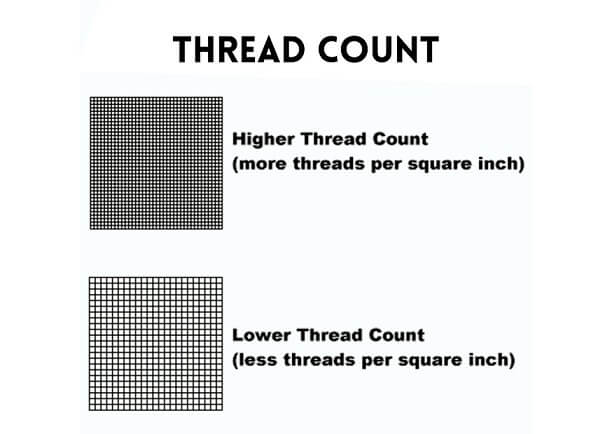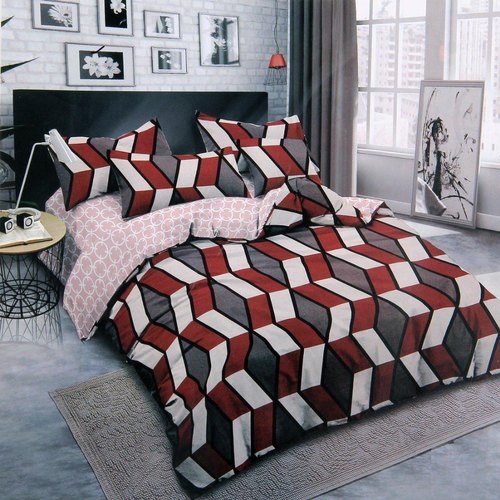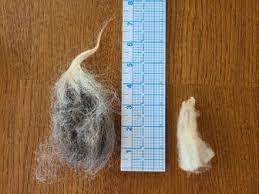What is the thread count for bed sheets, and does that really matter? The answer is, inarguably, yes. The thread count is a determining factor for the quality and durability of the bedsheet. The higher the thread count, the softer and durable, is the bedding.
Thread count is not the only parameter that you should look for when choosing a bedsheet. Other aspects like fibre, weave, etc., also play a crucial role.
In this article, we shall learn about the optimal thread count for a bedsheet. We will also discuss why this count really counts for your bedding.
Let us roll into our discussion.
What Does Thread Count Mean?
The thread count for a bed sheet is nothing but the number of yarns used per every square inch of the fabric. It is a measuring tool to evaluate how tightly the fabric is woven.

Here is an easy illustration for a better understanding:
Let us take a cotton bedsheet and consider its wefts and warps for each square inch.
Number of warp threads = 100 Total number = Number of weft threads + Number of warp threads Thread count = 100 + 100
Hence, the total thread count of the cotton fabric is 200.
The calculated thread count is an indicator to evaluate the softness and the feel of your bedding.
However, the thread count is one of the criteria to consider for analyzing the quality of the bedsheet. The yarn or thread quality is of greater importance than the quantity of thread and the thread count.
Does Having A High Thread Count Determine The Fabric Quality?
As mentioned earlier, having a higher count of the thread is not the only thing. The high quality of the fabric is also a must.
We often hear and see expensive bedsheets with a thread count of 1000 or more. Be careful when choosing such kind. There are chances that the manufacture might have likely combined two or more strands of fibres to make a single thread. This is typically a strategy to replicate the double or triple thread counts. When you wrap multiple fibres to form a single thread, you name it multi-ply threads. They often result in loose and rough fabrics.
Multi-ply sheets are susceptible to quick wear and breakage because of the low-quality fibres used by the manufacturers. These fibres usually squeeze in as much thread as possible for every square inch.
Contrary to the above, single-ply fabrics use lower thread count when compared to multi-ply fabrics. However, they have high-quality materials and hence last longer.
What is the Best Thread Count for Sheets?
What thread count is better for beddings? Well, this should explain everything. If you want quality bed sheets that are comfortable, look for those with a thread count in the range of 200 to 800. This is the ideal count you can look for. You can even prefer bed sheets beyond 800 thread count. However, there is no specific number as such for the perfect thread count. Any bed sheet that falls under the above-cited range is acceptable. The quality of the bedding will differ depending on the thread count.
Bed sheets advertised with a thread count of 200 is the minimum you can look for. Do not go for anything less than that because the bedding will not feel soft. Hence, it may not guarantee a comfortable sleeping experience.
For evaluating the best thread count, pay attention to the type of fabric used and its weave. It makes a huge difference. Let us consider the percale sheet, a closely woven fabric. Percale or plain weave is a simple type of weaving with one over and one under pattern. An average-quality percale sheet may contain about 180 to 200 thread count. Contrary to it, a sateen weave has a more tightly woven pattern. If you look at the average-quality sateen sheet, the thread count maybe around 250 to 300.
Let us take a look at the high-quality thread count ranges in beddings made of different materials:
| Material | Thread Count Range |
| Cotton | 200 to 400 |
| Egyptian Cotton | 300 to 400 |
| Percale Weave | 200 to 400 |
| Sateen Weave | 300 to 600 |
| Bamboo | 300 to 500 |
| Linen | 80 to 140 |
Thread count is not the determining factor for high-quality linen sheets. It is advisable not to use higher thread counts for the linen ones. There are a few materials that do not have thread count as the measuring factor. Below are those:
- Silk: You do not measure the quality of this material in thread count. Momme is the unit of measurement for silk, which is the weight for a piece of material with size 45 inches by 100 yards. The best quality of silk bed sheets contains a momme weight of 17 to 22.
- Microfiber: The measuring unit for microfiber material is GSM, i.e., grams per square meter. Heavyweight and durable flannel bedsheets fall under the range of 170 GSM and above. Lighter flannel sheets are also available. However, they are less durable but have lightweight. They are more breathable, too.
- Jersey: Jersey is another knit fabric popular for its softness and stretches. The measuring unit for this material is also GSM. However, the weight for these kinds of fabrics may vary based on the material used. Many jersey cotton sheets have a GSM of about 150.
Thread count is not the only measurement. Other factors like the yarn quality, weave, the production process of the manufacturer, and various others determine the quality of the beddings sets.
If you want a high-quality and durable one, it is advisable to look for it from a trusted manufacturer. Also, check for the reviews of the bedsheets before you purchase. Simultaneously research the material quality, and consider thread count as one of the determining factors.
What Makes High-Quality Sheets?
Do you want to know whether the bed sheets for your bed are of high quality or not? Check for the fibre, the staple length, and the weave pattern of the sheet. These factors will impact the softness, feel, comfortability, appearance, and durability of the bedding. Let us learn how to consider these parameters below:
Fibre
Bedsheet manufacturers use different types of fibres like cotton, bamboo, polyester, etc. Depending on the type, the long life, aesthetics, maintenance, etc., varies.
Fabrics like cotton, linen, and Tencel are popular for being strong, yet comfortable. However, it is entirely dependent on the individual’s preferences when choosing the fibre. If you want to enjoy the look and feel of the bedsheets, some people opt for fabrics like silk or satin. If you want to avoid feeling cold during the nights, you may go for fleece sheets or even flannel sheets, instead of Tencel or cotton fabric.
Staple Length
Staple length is yet another crucial factor for choosing a high-quality bed sheet. It is nothing but the length of the fibre used for creating a fabric. These include materials like cotton or wool.
The staples come in different lengths like short, long, and extra-long. The length and the softness have a direct relation to each other. If the fabric has a longer staple length, the softer it is. Fabrics with long and extra-long-staple lengths have the highest quality because of their more smoothness and lightweight. Moreover, they are very durable.
Fabrics having short staple lengths are not smooth, but thick. Hence, they do not make the bed sheets comfortable. However, these kinds of fabrics are most popularly used for products like denim, towels, etc.
Weave
The weave typically refers to the pattern in which warp and weft yarns come woven. The type of weave may impact the feel, look, and even durability of the textile. Percale and sateen are the most common and durable weaves used.
While a percale weave feels crisp, sateen is soft, smooth, and luxurious. The former is breathable and a perfect option for warm nights. Whereas sateen holds more heat than percale sheets.
Frequently Asked Questions:
Pills are nothing but the tiny fuzzballs formed on the bed sheets because of friction. These can be unsightly to look at and may cause scratching to your skin. Cotton or linen bed sheets have high resistance to these pills. However, you can minimize piling by avoiding a hot water cycle when washing. It is always advisable to use a dry cycle and select the gentle wash setting.
For any hot sleeper, bed sheets that are cool, comfortable, and breathable are most preferrable. Cotton, linen, or Tencel bed sheets are amongst those. Other fibres like Certain flannel or microfiber can insulate you on cold nights. Hence, make sure your bed sheet does not contain these materials.
It is always recommended to wash the new bedsheets whether you purchased them online or in person, and irrespective of the material. This is because the sheets may contain chemicals from the manufacturing process, or have unpleasant odours. Hence, it is advisable to clean them before use. Another advantage of doing this will help you look out for any defects, loose strings, rips, etc. Once identified, you can go for exchange if needed.
Conclusion:
I hope this article cleared the air on the thread count of bedsheets and their significance. Now that you are aware of everything make sure you check for all the details mentioned in this article before making any purchase. This will help you in the thoughtful selection and, also guarantees a serene and peaceful good night’s sleep. Furthermore, it helps you feel the elegance crafted for your bed.
Write to us in the comments section below if you find this article helpful and informative. Let us know if you have any questions or need more information. Feel free to add your inputs to this article and let us know if we missed out on any points.
We would love to hear and learn from you.
Stay healthy and stay safe!!!



